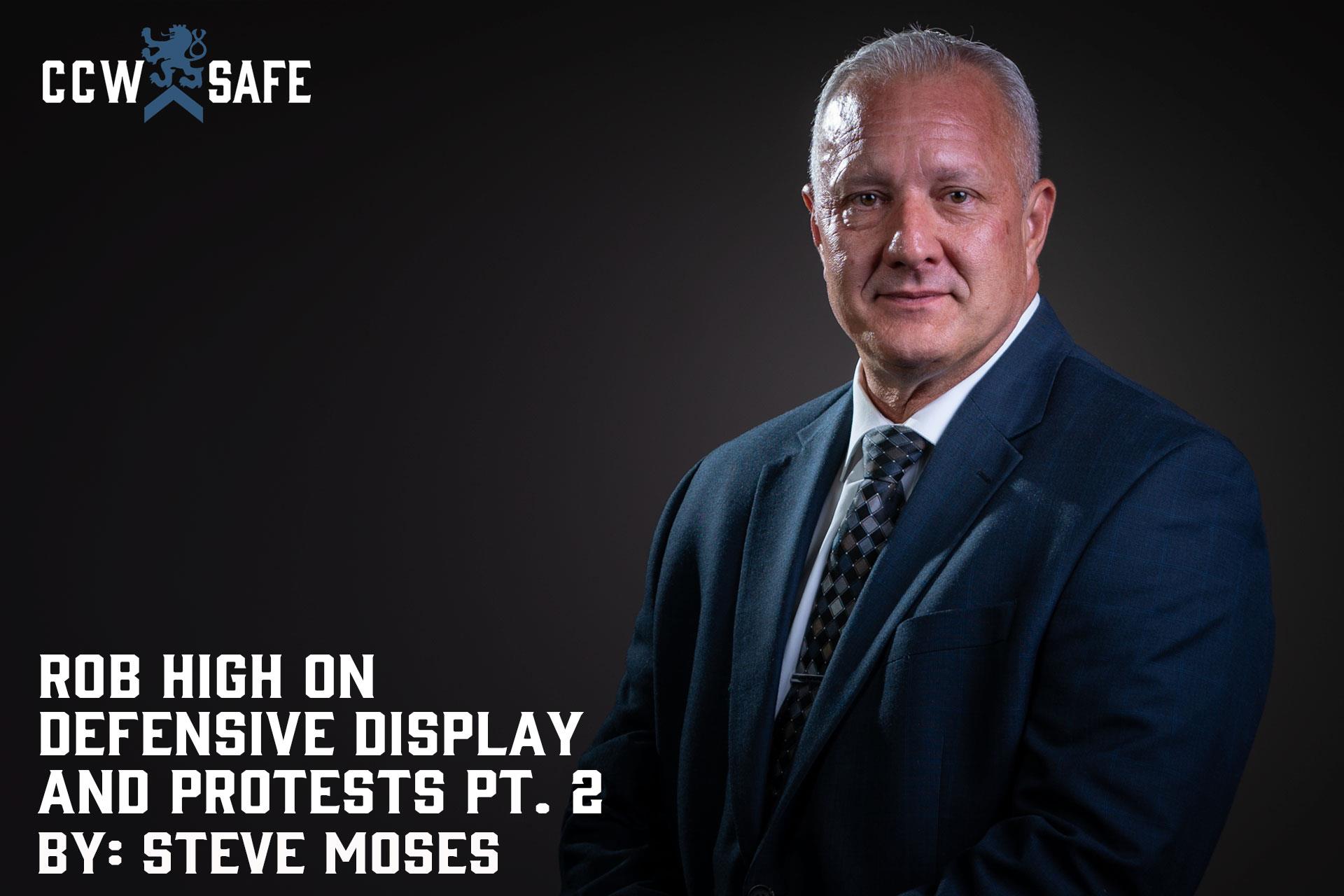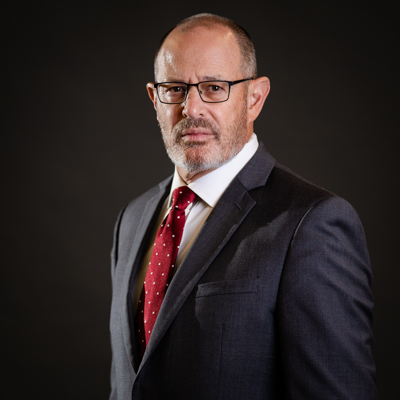
Posted on March 16, 2021
ROB HIGH ON DEFENSIVE DISPLAY AND PROTESTS PT.2
ROB HIGH ON DEFENSIVE DISPLAY AND PROTESTS PT.2
Part One of this article was an interview between Rob High and I in which we discussed the dangers for concealed carriers who find themselves in a direct confrontation with others during a protest. Rob pointed out that it was probably in the best interest of concealed carriers to avoid protests that included persons known to possess opposing views, as well as to leave any protest immediately if the concealed carrier noticed that others with opposing views were starting to move in. The same is true if a concealed carrier finds him or herself caught up in a protest through no real fault of their own. Our interview continues below.
Rob: Something that persons interested in organizing a Rally might do to make the event safer is to obtain a permit to stage an event, request law enforcement presence, and even ask the governing authority to cause the creation of a physical separation between any parties with opposing views. In other words, the “protesters” are separated from the “counter-protesters” into different areas.
Steve: That sounds like such a good idea. That would have never occurred to me. So far, we have discussed what concealed carriers might do to not get caught up in a situation in which they believe that their lives and health are so endangered that they felt compelled to draw their concealed handgun. Let’s assume that for whatever reason that they have become concerned for their safety. Now what?
Rob: It is time to move and to continue moving until such time a break in contact takes place. The only way this break is going to happen is if the concealed carrier leaves the scene before others can close on him or her or the concealed carrier’s actions force others to remain at the scene while he or she leaves the scene. It is unlikely that a single concealed carrier can drive off an entire angry mob. If option number one is no longer possible, then option number two is probably the best choice. One thing both options have in common is that movement is involved.
Movement is just so important. It allows me to immediately create distance. Distance creates time, and time creates options. It demonstrates that I had no interest in remaining at the scene and fighting. If the opposing party attempts to prevent me from leaving the scene it may confirm that my use of force was the sole option available to me because I was about to be injured or killed.
Steve: I absolutely agree. Movement can also help us pick out those persons that that we may need to deal with. Are we seeing any pre-assault clues? How fast are they moving towards us, what are they saying, and do we see any weapons in their possession? Sheer numbers alone can create an enormous disparity in force. Now let’s add the fact that the intent of the people surrounding us may vary from curious to rude to threatening and perhaps even murderous. This is a whole lot to process in what may be an extremely short time.
I like what Claude Werner said when he was a guest on a recent Shawn Vincent and Don West podcast. Claude stated something to the effect that concealed carriers need to know what their personal policy is for not shooting or shooting another person. He went on to say that the answer might be as simple as “if there is any other way for me to avoid death or serious bodily injury it is a no shoot. If there is no way for me to avoid death or serious bodily injury then I am going to shoot.” That’s a straightforward policy that many concealed carriers never give any thought to.
Rob: Concealed carriers need to understand that the justification for displaying a defensive handgun is pretty much the same as the justification for shooting someone with a defensive handgun. The severity of the consequences of each when unjustified differ to some extent but being arrested and convicted for brandishing or a similar offense is still a serious matter and depending upon the circumstances it may be considered a felony offense.
Steve: Do you think that it is safe to say that a possible litmus test for the use of deadly force or display of a defensive firearm is whether the perceived threat genuinely appeared to have the opportunity, ability, and intent to seriously injure or kill the concealed carrier, and withdrawal or escape was not possible?
Rob: I think that we may be dancing all around the subject but are getting close.
Steve: That may be the best summary that we can come up with for addressing all the variables that may be in play if a concealed carrier finds him or herself in such a terrible situation. I think the line between defensive display and defensive shooting is thinner than many people think. I would also go on to say that concealed carriers who are willing to learn what may happen during a protest or even a riot, give some thought in advance as to what actions they might take under a variety of circumstances if they find themselves in one, and then train accordingly are far more likely to fare well that than those who prize spontaneity.
Rob: Let’s close by saying that if you are there and see potential trouble coming your way that you need to leave immediately. I am absolutely in support of my Second Amendment rights, and the protection of that right. I fully support anyone who wishes to peacefully protest or lobby their position, but I really want to drive home the fact that I can look at these things through the eyes of a concealed carrier and through the eyes of a law enforcement officer. We aren’t trying to discourage anyone from exercising these rights, but we do want to give them food for thought for any of these scenarios. They need to have thought through their options before finding themselves in any of these “spontaneous” situations and not having any other options. The only time that gun should come out of the holster is when that is the only possible action one can take to save their life.
 |
Steve MosesSteve Moses has been a defensive firearms trainer for over 26 years and is a licensed Texas Personal Protection Officer with 7 years of experience performing as shift lead on a church security detail for a D/FW area metro-church. Steve is a co-owner and Director of Training for Palisade Training Group, LLC based in Dallas, Texas. Moses is a retired deputy constable and spent over 10 years on a multi-precinct Special Response Team. He owns multiple instructor certifications, including Rangemaster Advanced Handgun Instructor and Defensive Shotgun Instructor, Red Zone Knife Defense Instructor and Adaptive Striking Foundations Instructor, Modern Samurai Project Red Dot Sight Instructor, and State of Texas Personal Protection Officer Instructor. Steve holds a BJJ Brown Belt in Relson Gracie Jiu Jitsu. He is a content contributor for CCW Safe and writes weekly articles on various subjects of interest to concealed carriers. Moses shoots competitively and holds an IDPA Expert rating. Steve is an annual presenter at the Rangemaster Tactical Conference. |